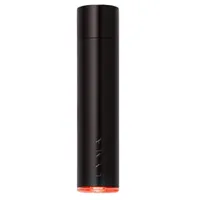I've been using this £2k beauty gadget for four months - here’s my honest Lyma Laser review
Sienna and Gwyneth love it, but can this clinical-grade laser make skin look and act younger? Our beauty editor has the pictures to prove it
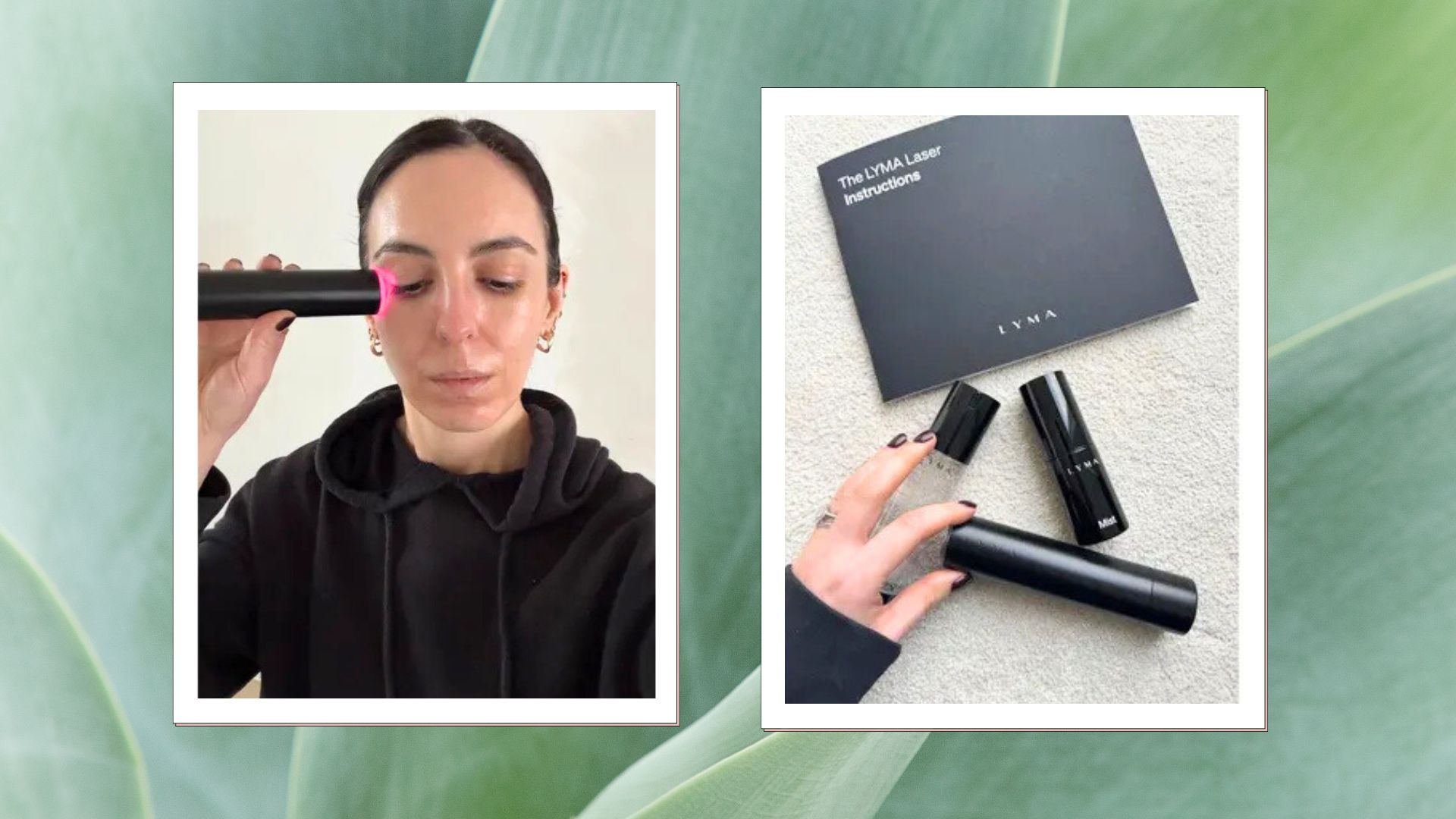
Dropping a whisker shy of £2000 on a skincare tool is not an easy decision. Is it worth it? Well, that depends on your budget, expectations and level of consistency. As a beauty editor, I’ve tried plenty of snazzy skin gadgets, but I’ve never found one as easy, comfortable and versatile to use as the Lyma. After four months, my skin looks healthier and more even-toned. Most tellingly, it’s a tool I want to continue using. I have every faith it’s going to continue to make me look fresher.
-
+
Easy to use, painless with no downtime
-
+
Handbag-friendly and portable
-
+
Works in just three minutes per area
-
+
Can be used anywhere on the body
-
-
Very expensive
-
-
Requires daily commitment
Why you can trust Woman & Home

Forget the Hermes Birkin. The hottest celebrity arm candy right now is the Lyma Laser, with A-listers like Sienna Miller, Gwyneth Paltrow and Kate Beckinsale all proclaiming their devotion to the portable power tool. I tested it for four months to see if this ‘it’ gadget lives up to the hype.
SPECIFICATIONS
RRP: £1,999
Laser spec: 500mW near-infrared continuous cold laser beam at 808nm
Treatment lens: 8cm²
Charging input: Rechargeable battery
Warranty: 2 years
From microcurrent and microneedling to the best red light therapy devices, it seems like there’s a new technical innovation vying for our attention every week. And many of us are being drawn like moths to a high-tech flame.
At-home beauty gadgets provide a more cost-effective and less invasive alternative to in-salon tweakments. But in a saturated multi-billion-pound industry, the Lyma Laser stands out, with breakthrough technology engineered by scientists and surgeons, and protected by 38 patents.
Today's best Lyma deals
Be quick - LYMA's getting in on Black Friday with 25% off this medical-grade laser that makes skin look and act younger in just 30 days.
Our Beauty Editor’s Lyma Laser review, with before and after pictures
With an army of A-list fans, I feel truly lucky to have had time to test the laser myself for the past four months. I wasn’t sure how noticeable my results were day-to-day, but as I write this Lyma Laser review and see my side-by-sides, I'm quite blown away. Here’s why.
What is the Lyma Laser?
Simply put, Lyma has produced the world’s first clinical-grade at-home laser device, which works to regenerate skin at a cellular level to accelerate collagen and elastin production. It claims to improve wrinkles, pigmentation, sagging, redness, scars and breakouts using cold laser technology, which is completely painless - you won’t feel a thing, not even any heat.
Unlike cumbersome at-home lasers of old or LED masks (handy but impossible to make look chic on a bedside table), Lyma is nifty, nimble and portable. It’s essentially like going from an Amstrad computer to an Apple Macbook. But the Lyma Laser we see today was actually a happy accident.
The technology was originally developed as a medical laser back in the 1960s, used to treat injuries such as torn tendons and worn cartilage. Doctors soon noticed an interesting side effect to the low-level laser therapy - as the light had to pass through the skin to target the damaged tissue, it had a visible anti-ageing effect, reducing wrinkles, redness and scarring. Lyma’s team of scientists successfully re-engineered this technology to make it suitable for safe at-home use.
Sign up to our free daily email for the latest royal and entertainment news, interesting opinion, expert advice on styling and beauty trends, and no-nonsense guides to the health and wellness questions you want answered.
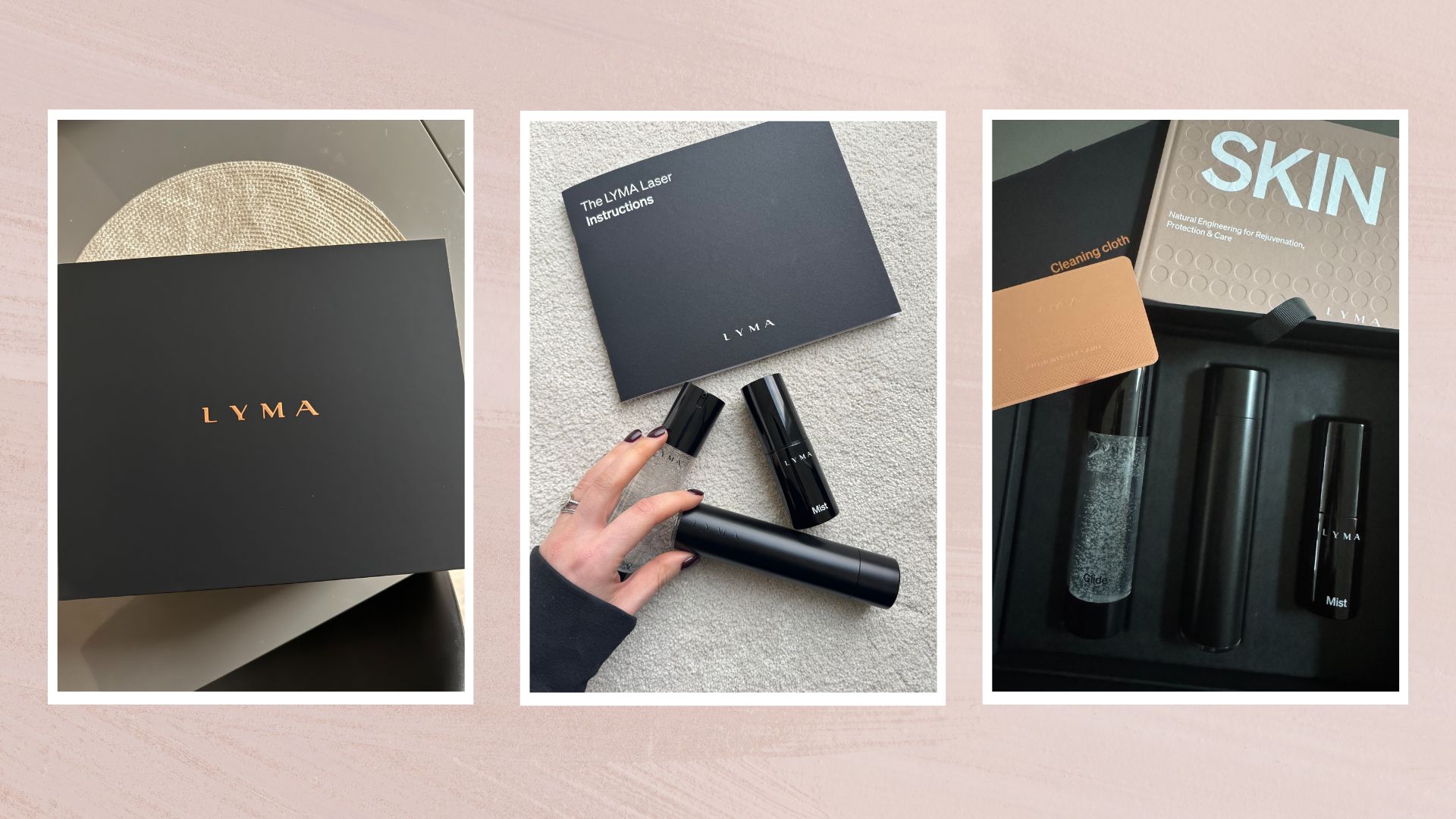
How does Lyma Laser work?
As we age, cells become sluggish and less active, skin loses elasticity and is less able to hold on to water, all of which mean wrinkles begin to form. The Lyma Laser sends cold, near-infrared laser light deep into the dermis to change the behaviour of the cell itself.
If you were giving a tour of your skin on Cribs, you might refer to the dermis as “where the magic happens”. Here, the light is absorbed by mitochondria - the battery pack of the cell - and converted into chemical energy. These powered-up cells are effectively switched on like a light, and begin the regeneration process, accelerating skin repair, reducing inflammation, increasing blood flow and stimulating collagen production - the type responsible for making skin springy and plump.
It’s important to note in this Lyma Laser review that the technology is very different to LED. When LED light is scattered, the energy density of the waves decreases as they travel through the different layers of skin, so its effect is more potent at the surface. Compared with red light therapy devices, the Lyma’s near-infrared laser light has a longer wavelength sent in powerful straight-line beams, so it penetrates down to the very base layer of the skin, where it can affect muscle and joint discomfort, as well as improve skin regeneration.
Where other treatments work by inducing injury to bring about a healing response, such as radiofrequency or microneedling, the Lyma Laser essentially improves the energy content of the cell and manipulates the way it behaves to rejuvenate skin.
This zero-damage, cold laser technology means there’s no risk of scarring, which makes it a safe solution for black and brown skin tones, who have typically been excluded from laser treatments that use heat to cause damage and trigger collagen production.
Not only does it work on every skin type and tone, it can be used in pregnancy (just not on the abdominal area), and anywhere on the body - making it great for sagging knees, tech neck and scarring. It’s also safe to use around the eye area.

How to use the Lyma laser
The Lyma Laser is quite different to any other skincare device I’ve used before. Unlike microcurrent tools like the ZIIP Halo, which only work with the brand’s conductive gel, the Lyma Laser can be used on clean skin, on top of make-up, and even over SPF. The starter pack does come with a 30-day supply of Lyma Oxygen Mist and Oxygen Glide, which help to optimise the results, but the device works without them. If you need a bit of slip and slide, use your favourite serum.
I used the Mist and Glide combo about 50% of the time. To get going, click the laser ‘on’ and start gliding it across the face and neck slowly, in upward motions. Pass over each section three times before moving up the face. I found I could do my whole face in 15 minutes, usually whilst bingeing Married At First Sight. It’s so easy to use, I found myself zoning out, and by the second week, I did the whole routine on autopilot.
You can also use the Lyma Laser as a targeted treatment. So if you have a noticeable patch of pigmentation or acne scarring, you can hold the laser over this area for three minutes. Lyma recommends that you use the laser every day for the first 12 weeks for optimum results, and then three times a week for maintenance after that.
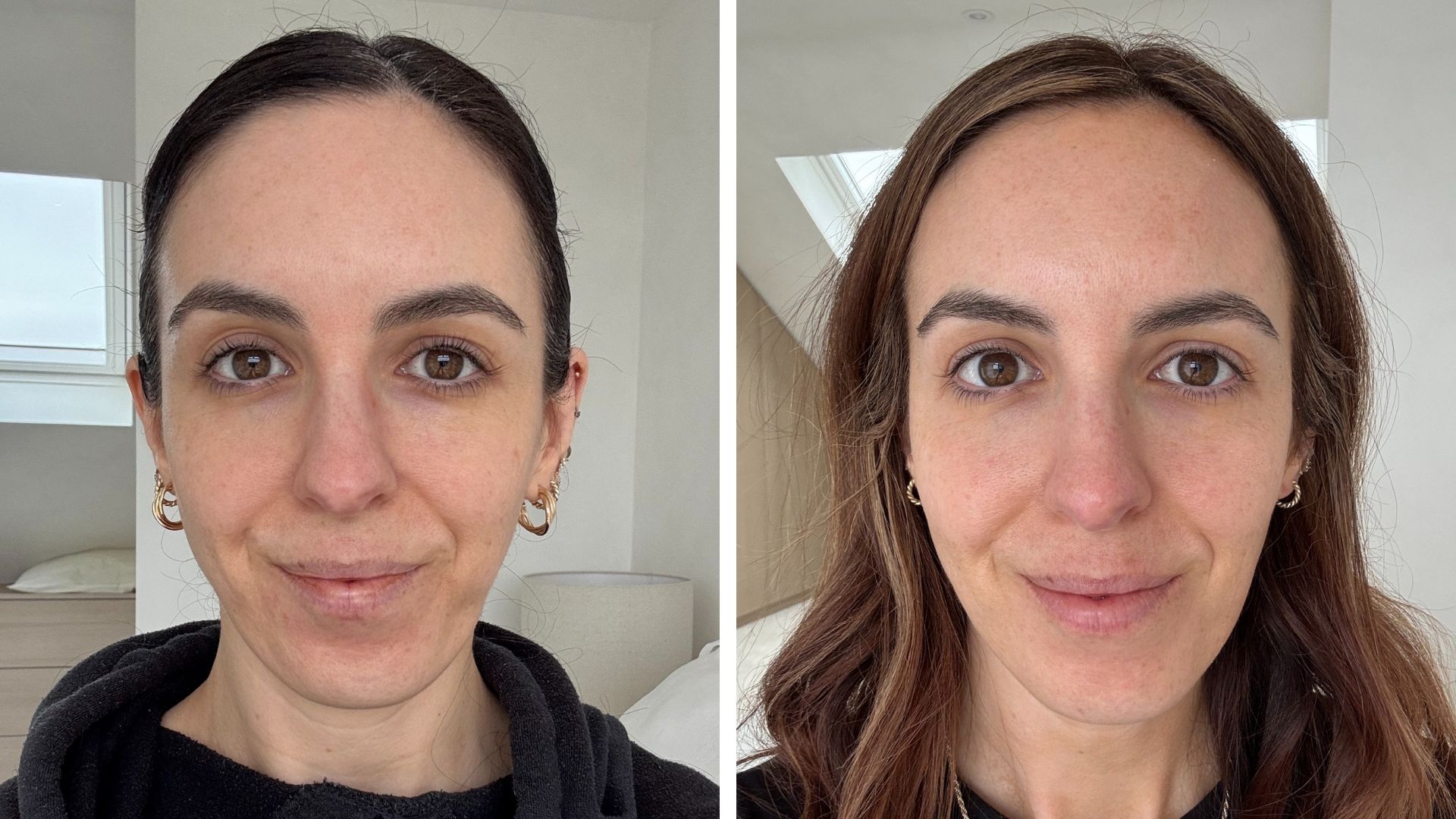
Before and after using the Lyma Laser for four months
The results
The before and after shots on Lyma’s website are compelling. Saggy knees become snatched; jowls appear melted away. The clinical trials are similarly astounding. Ten testers used the Lyma Laser twice a day with the Lyma Mist & Glide products over five weeks. They measured a 64% improvement in the appearance of pigmentation and a 53% improvement in the depth and look of wrinkles.
As for my own experience, I’ll admit I wasn’t sure how much the laser was doing for me. That was until I saw my four-month before and after shots. Side by side, the difference is clear. My wrinkles do look slightly softer, and my under-eyes look a lot brighter. And if I examine the photo, I think my cheeks look a little more lifted.
I didn’t go into using the laser as a hyperpigmentation treatment - I was more focused on plumping up my laughter lines and the creases around my eyes - but a more uniform complexion is a fantastic by-product. I’ve been focusing more below the brow, but going forward, I’ll be paying more attention to the sun damage on my forehead, having seen what it’s done for the peppering of pigmentation across my cheeks.
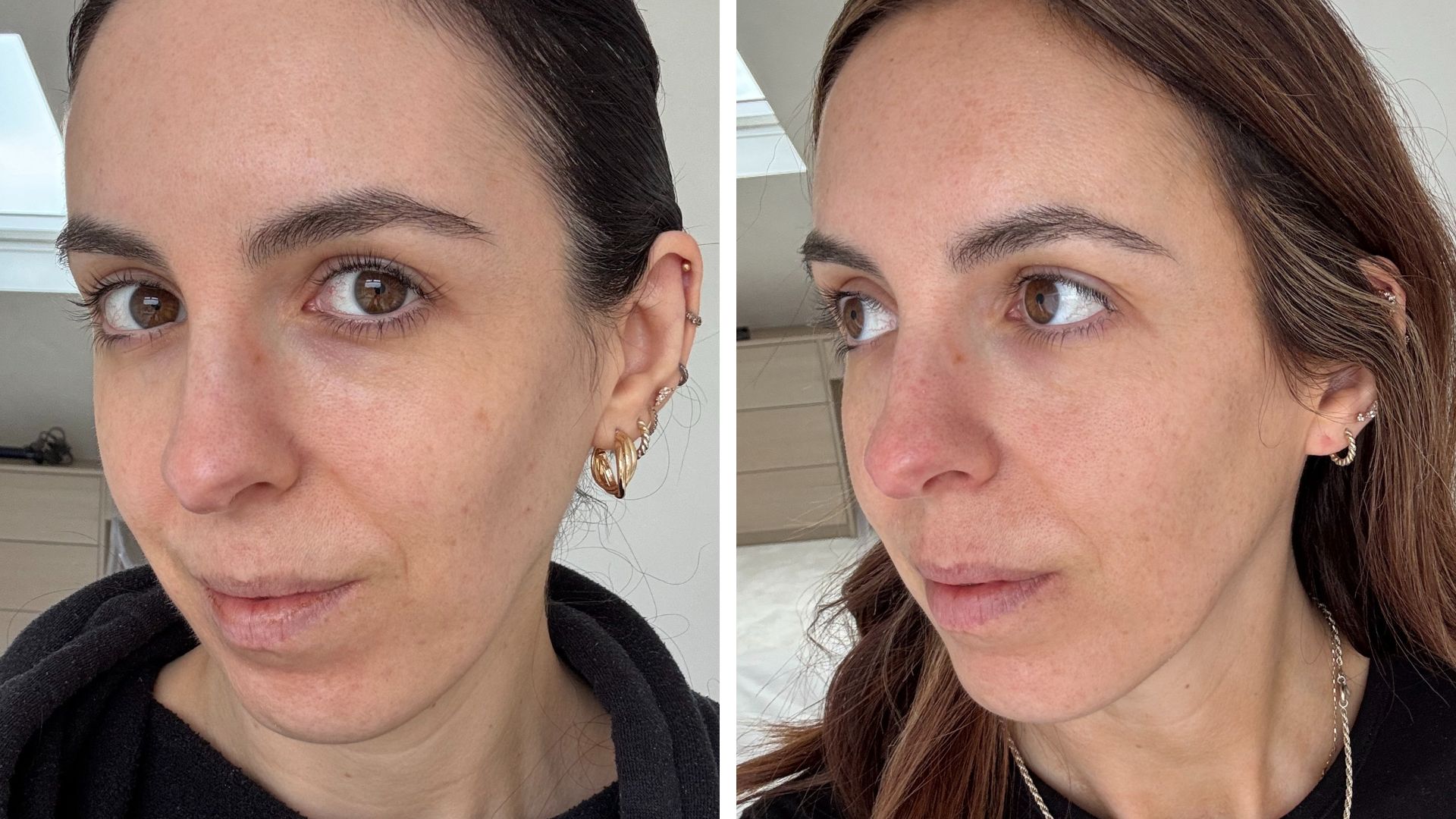
Before and after using the Lyma Laser for four months
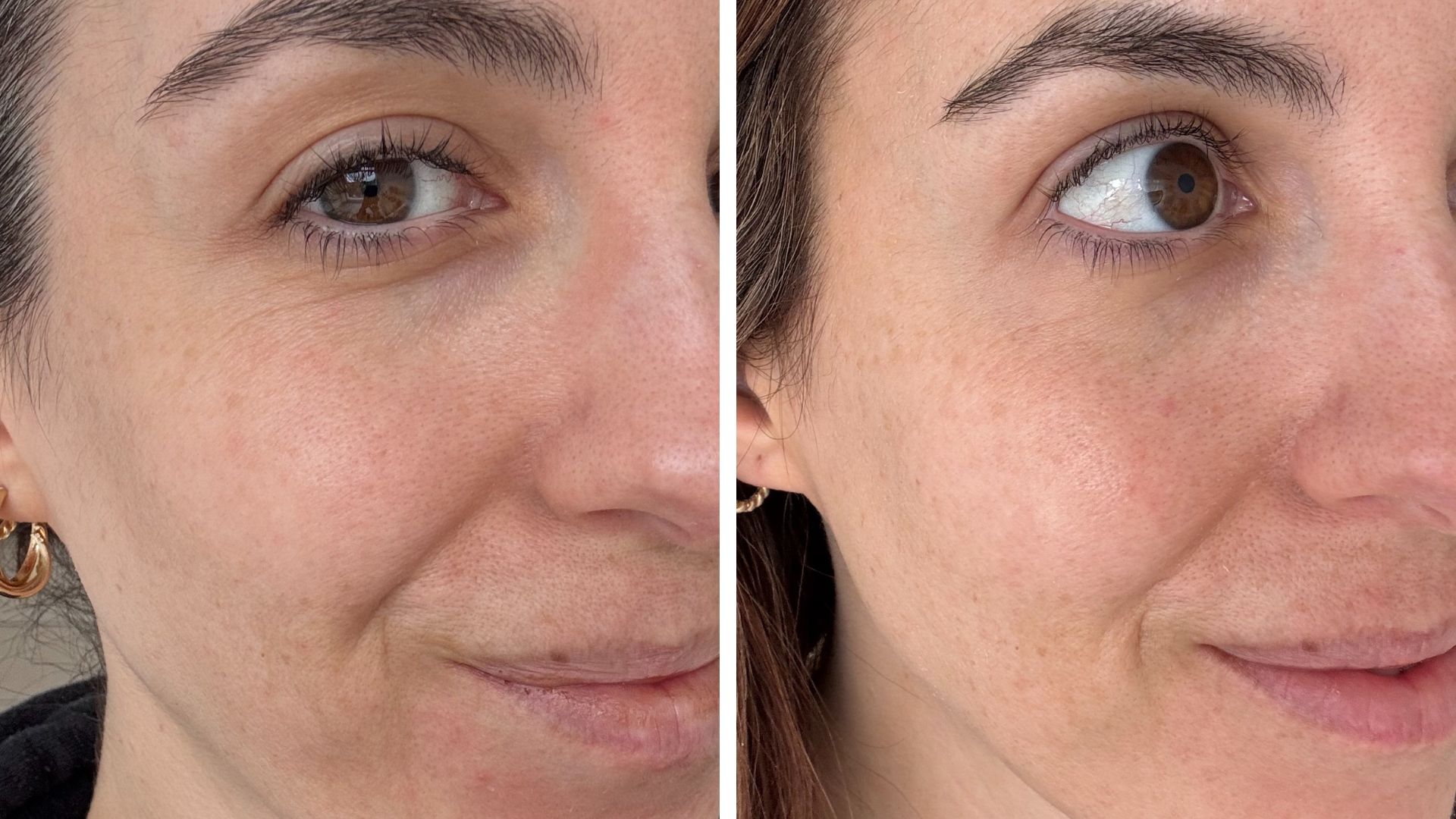
Before and after using the Lyma Laser for four months
The downsides
There’s no getting away from the fact that this is prohibitively expensive. I’m lucky that I get to try these amazing tools as part of my job, because otherwise, this might have been out of my reach. Although there is an option to split the cost, interest-free, over 12 months, which makes it more doable.
Having said this, the price doesn’t seem to be affecting demand. Waiting lists for the newly launched Lyma Laser PRO (a larger 30cm² lens compared with the standard 8cm² lens I tested) have already exceeded $100 million.
I do believe that a good skincare device is worth the investment, particularly when you weigh it against regular salon tweakments. A good Hydrafacial (one of my favourite non-injectable skin treatments) will set you back around £150 a pop. You’d only have to use your Lyma Laser for 13 days to get the cost-per-use down to facial-level. Plus, the sheer portability of the Lyma Laser - use it in bed, on holiday, on an aeroplane - means you’re more likely to slot it into your daily regime. Tell me the last time you managed to carve out an hour on the weekend to treat yourself to a facial or tweakment. I’ll wait.
The Lyma Laser comes with a two-year warranty, which keeps you covered, and has an expected lifespan of ten years, so you can do the maths on how little it works out over a decade.
Lyma Laser review: Our verdict
I’m a bit of a spoiled and demanding ‘Veruca Salt’ character when it comes to skincare devices. “I want big results, and I want them now,” I scream, stomping my foot impatiently. The Lyma Laser is not a quick fix, like a wrinkle-smoothing injectable or facelift. It’s targeting cells in the deepest layers of skin to stimulate repair and collagen production - results are never going to be overnight.
Whilst it’s hard to see real change in your skin reflected in the mirror each day, I’m buoyed by my four-month before and after pictures. My skin looks fresher, smoother and a whole lot more uniform. My eye area is definitely improved - the darkness has lifted, and the crinkles do look a little shallower.
With the Lyma Laser you do need to be consistent, so if you’re a bit flighty when it comes to skincare fads, this probably isn’t the tool for you. I’ll be honest - there were nights when I was so tired, taking my make-up off was considered a win, so I’d probably rank my consistency in these first four months at around 80%.
I’m so encouraged by the side-by-sides, I would definitely recommend the Lyma Laser to anyone wanting to improve wrinkles, sagging, pigmentation and scarring. It combines the most innovative laser technology on the market with a design that is so incredibly easy to use, so for that, I probably would justify the splurge myself - split over 12 months.

Stephanie Maylor is a Beauty Editor working across five national magazine titles, with almost 20 years' experience in the industry. She has written for many brands, including woman&home, Grazia, Now, More!, Fabulous, NW, Woman, Woman's Own, Woman's Weekly, Essentials, Best, Chat, and OK! online.
In 2010 she launched her own beauty blog, which was shortlisted for Best Beauty Blog in the 2011 and 2012 Johnson & Johnson Beauty Journalism Awards. She has interviewed many high profile industry experts and celebrities including Alesha Dixon, Twiggy and Christina Hendricks.
